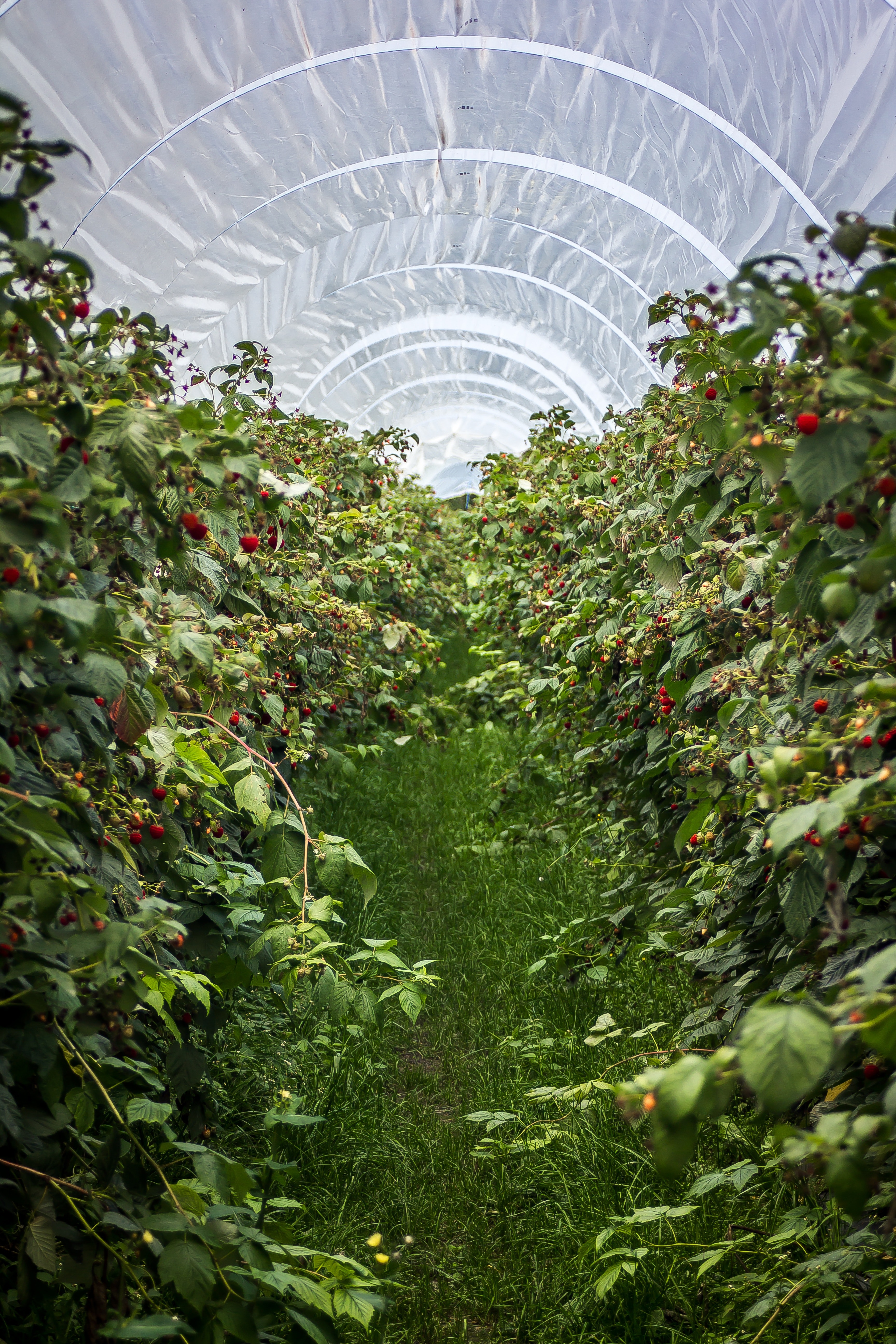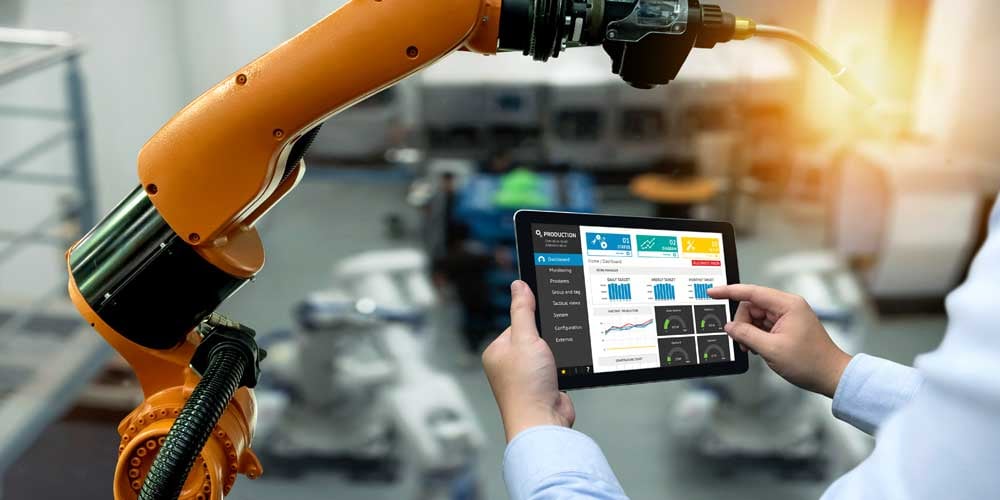Technology might not be the first thing we think of when it comes to food. But it’s certainly transforming the food industry. For example, robotics and automation are ensuring quality while keeping labour costs low. AI is giving food manufacturers, processors and distributors in-depth insights into their process and machinery performance. Drones are allowing damaged crops to be quickly identified and tended to.
Let’s dig deeper…
- Automation improves process efficiency, product quality and safety
- AI allows opportunities for process optimisation
- Drones allow for complete visibility
- 3D printing opens doors for innovation
- End-to-end solutions to improve supply and demand management
Automation improves process efficiency, product quality and safety

Robotics and machinery give food businesses the chance to improve overall process efficiency and boost product quality while reducing the risk of any human-related errors and safety issues. For example, meat processing plants can use robotics to handle the most difficult cuts of meat - which reduces the risk of workers becoming injured and accelerates the process.
Another example of automation in action is if you have a smart factory - one where your machinery and business systems are all connected to each other. So if your machinery are IoT (Internet of Things) enabled, data can be automatically collected on its performance and transferred to your ERP system. No need for your workers to go around manually inspecting the machines.
Read more about the benefits of automation here.
AI allows opportunities for process optimisation
We touched on this in the above paragraph but let’s dive a little deeper.
IoT-enabled devices will automatically analyse and collect data on how your machines are performing compared to how well they should be performing. This saves your teams time as they don’t need to do it manually.
What’s even more beneficial is when this vital data automatically transfers over to your ERP system. Not only does this eliminate the need for manual data inputting, but it also centralises the information. That makes it easier for anybody within the business to access the data and quickly see areas for improvement.
An ERP system that’s integrated with advanced analytics tools can even provide you with customisable data dashboards. So, you can gain a snapshot view of the information you want to see.
Drones allow for complete visibility

Though that doesn’t mean they’ll be replaced entirely. Instead, drones help your workers become more efficient. They can spend less time manually inspecting crops and more time on other vital tasks (the ones that really require a human touch).
3D printing opens doors for innovation
A study that examined the global state of 3D printing found that manufacturers are increasing their reliance on 3D printing to accelerate product development. This also extends to the food industry - NASA is experimenting with 3D printing pizzas and researchers are exploring the idea of using 3D printers to produce soft foods for people with swallowing disorders.
Niche as this may seem, these examples only highlight the opportunities for innovation that 3D printing technology opens for the food industry.
End-to-end solutions to improve supply and demand management

Tackling waste reduction has long been a top priority for the food industry. In particular, managing supply chain waste and ensuring over-supplying doesn’t happen. After all, food items often have a short shelf life and over-supply can lead to products being thrown away if they aren’t used in time.
End-to-end solutions, such as ERP systems made specifically for the food industry, can help food businesses better manage supply and demand. Food ERP software can ensure suppliers and manufacturers only purchase the precise amount of stock required, based on real-time demand.
The best food ERP software will also offer:
- The ability to help avoid lack of alignment on inventory levels
- Reduce carbon footprint by minimising travel throughout the supply cycle
- Co and bi-product functionality so you can reduce waste and create multiple end products to boost revenue
Technology is driving the food industry. Is your business keeping up?
Improving the efficiency of manufacturing, processing and packaging. Extending shelf life. Enhancing allergen management to safeguard consumers. Ensuring quality. It’s clear that technology like AI, automation and ERP systems are paving the way for the future of food.
To ensure your business is keeping pace, it’s not enough to adopt the right technology for your business. The way you go about adopting it matters too. From picking the right technology for your processes to effective change management and driving user adoption, download our guide to find out more.

